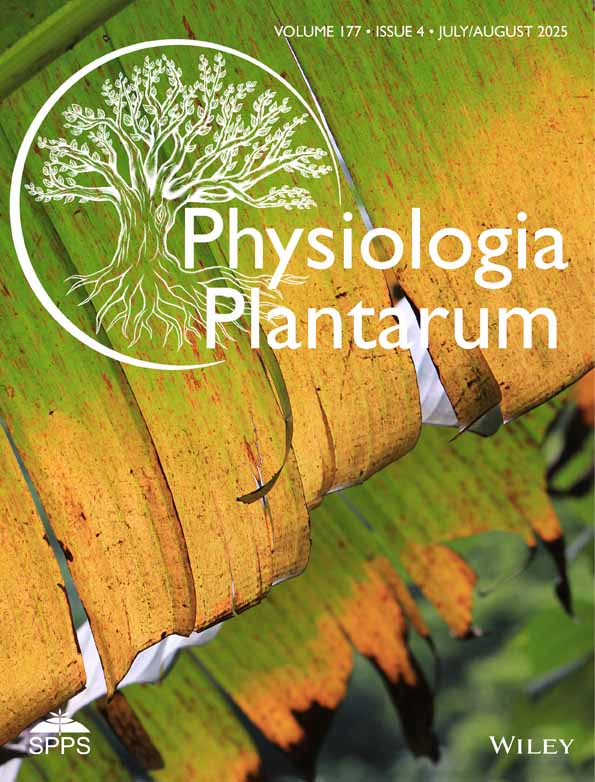Metabolism of 14C-aspartate during shoot bud formation in cultured cotyledon explants of radiata pine
Abstract
Aspartate metabolism was investigated in excised cotyledons of radiata pine (Pinus radiata D. Don). These cotyledons were cultured under shoot-forming (plus N6-benzyladenine, SF), non-shoot-forming (minus N6-benzyladenine, NSF) and unresponsive (plus N6-benzyladenine, OLD) conditions, then incubated with [14C]-aspartate for 3-h pulse treatments followed by 3-h chase treatments with cold aspartate. The majority of label was recovered in the CO2, amino acid, organic acid and pellet fractions. Uptake was greatest in all tissue types early in culture. Most (over 80%) of the [14C]-aspartate taken up by the tissues was converted to CO2 at day 0 in SF and NSF tissues, CO2 accounted for less than 50% of the total radioactivity in other tissues. Greater incorporation into fractions was observed in SF tissues during promeristemoid formation, while in NSF tissues the greatest incorporation was observed during a period of rapid elongation. Generally, less incorporation was observed in OLD cotyledons than in SF and NSF cotyledons. Analysis of the amino acid fraction showed that labelled aspartate was converted to other amino acids, mainly glutamate, glutamine, asparagine and 4-aminobutyric acid.
Abbreviations
-
- GABA
-
- 4-aminobutyric acid
-
- LSS
-
- liquid scintillation spectroscopy
-
- NSF
-
- non-shoot-forming
-
- OLD
-
- unresponsive
-
- SF
-
- shoot-forming
-
- SH
-
- Schenk and Hildebrandt




